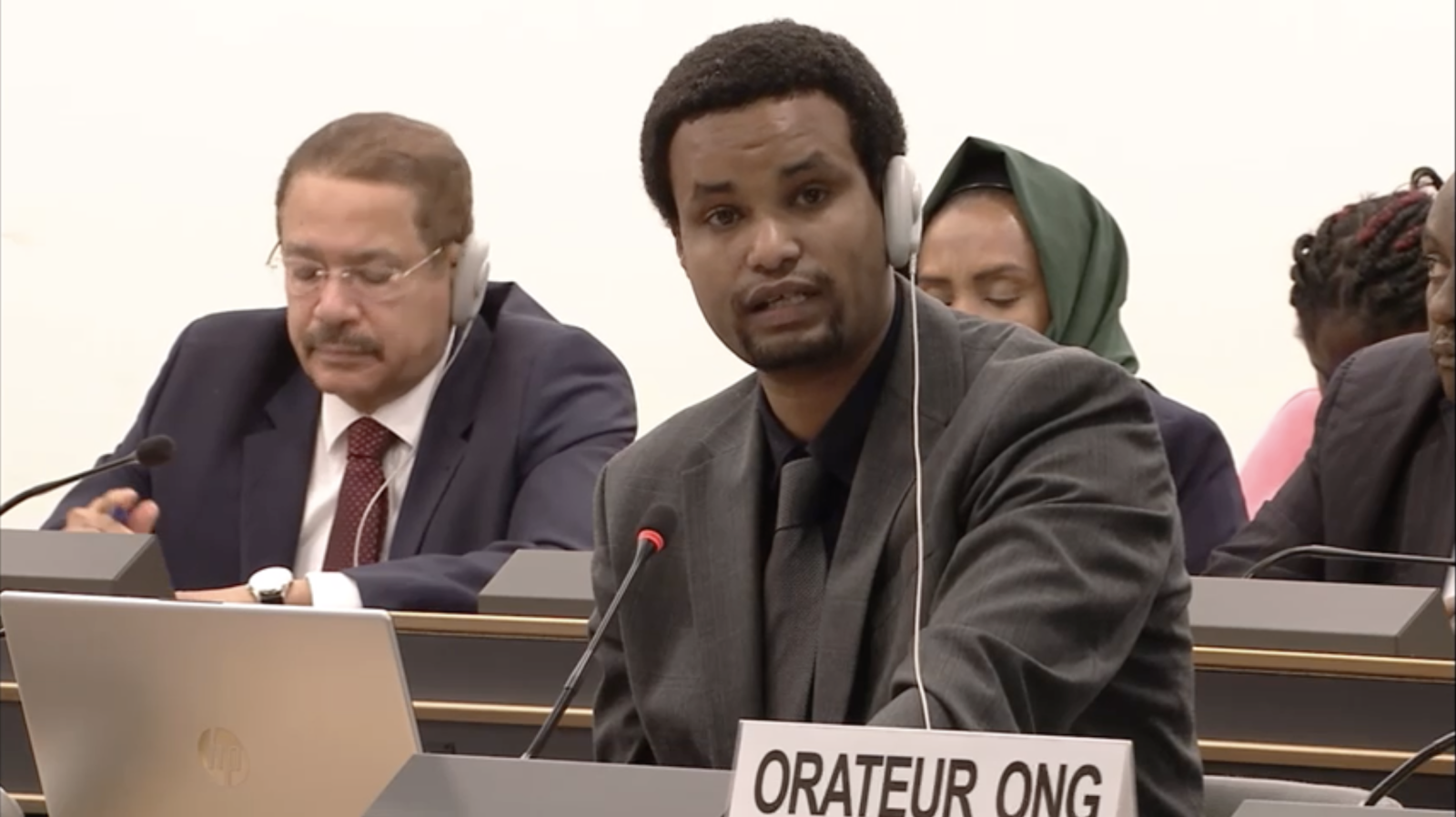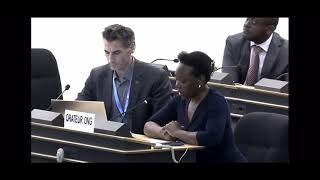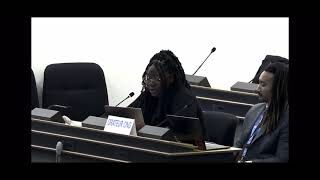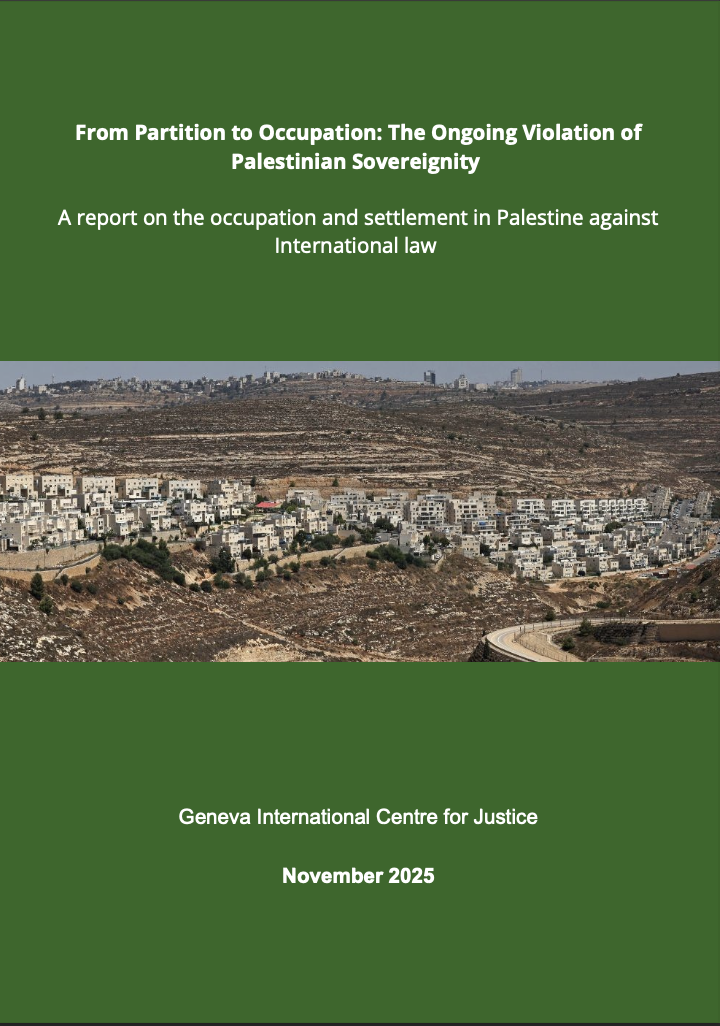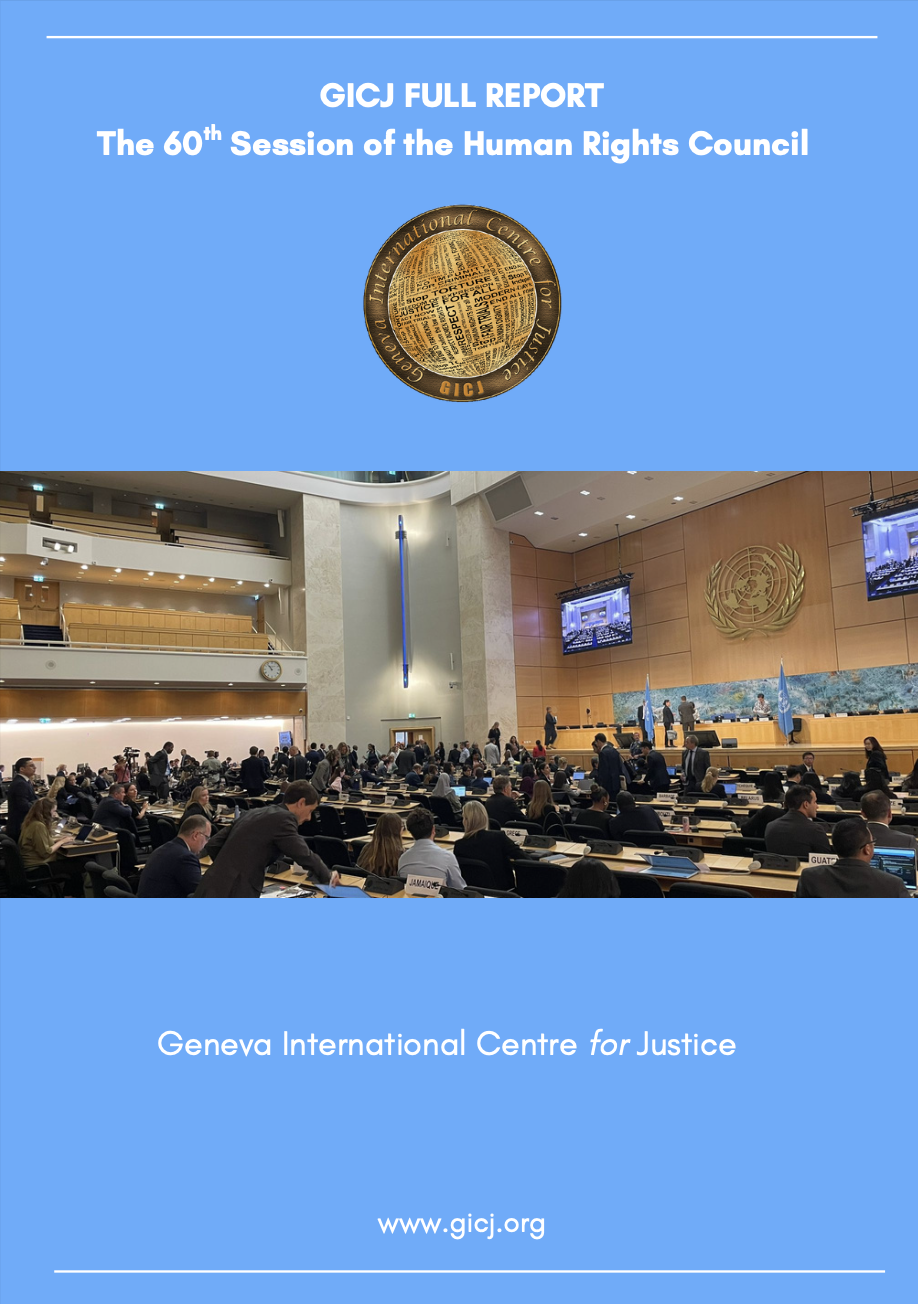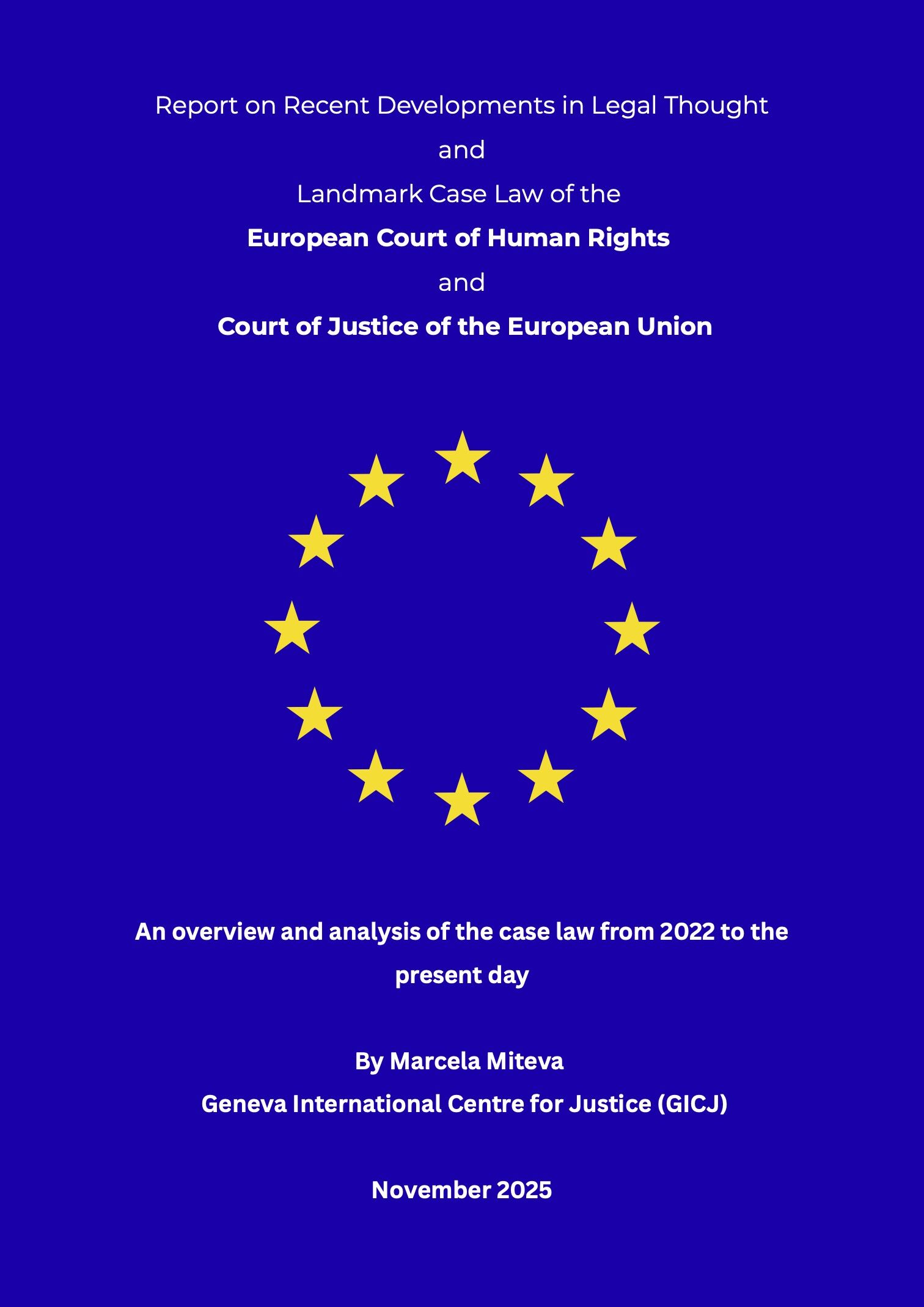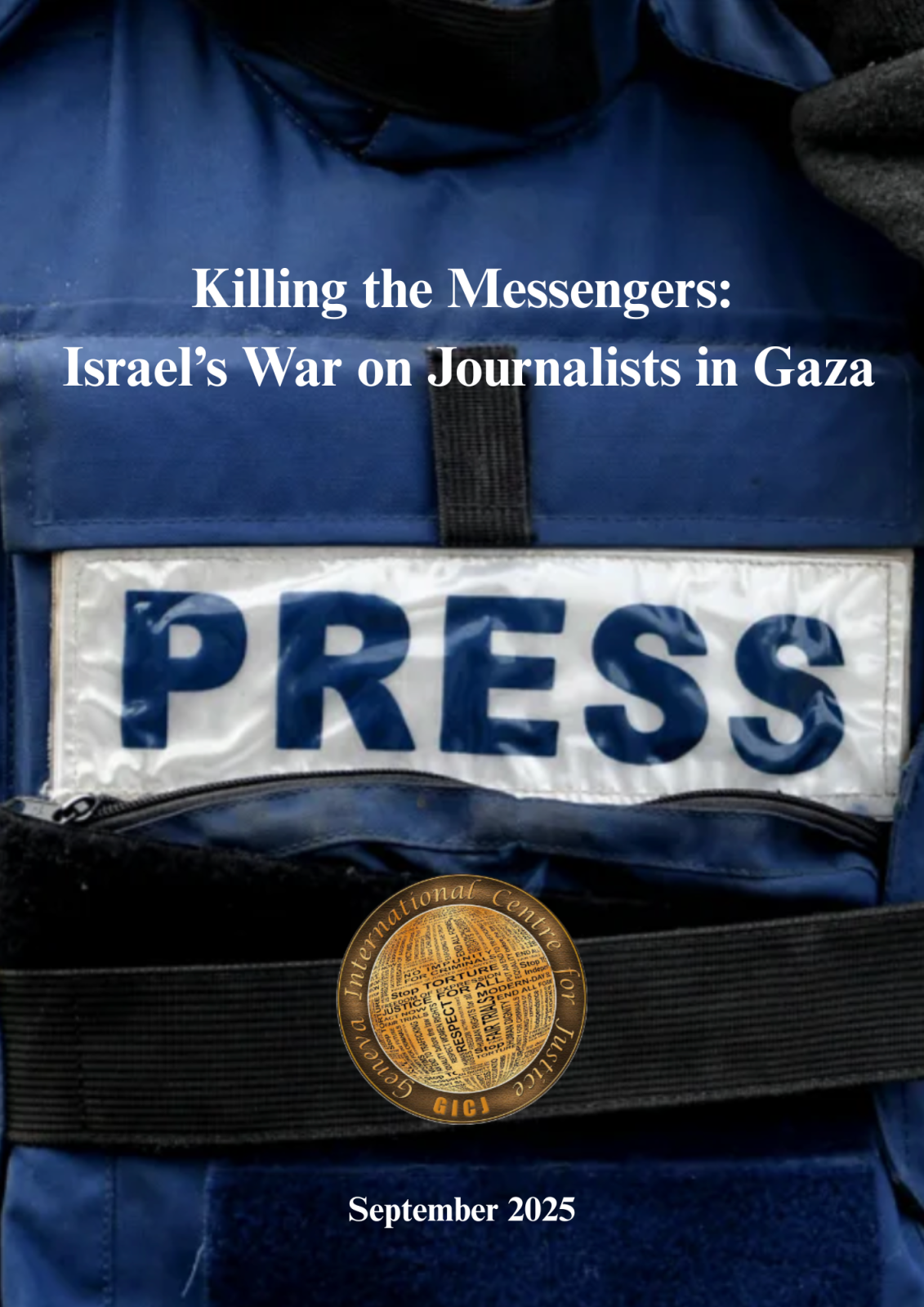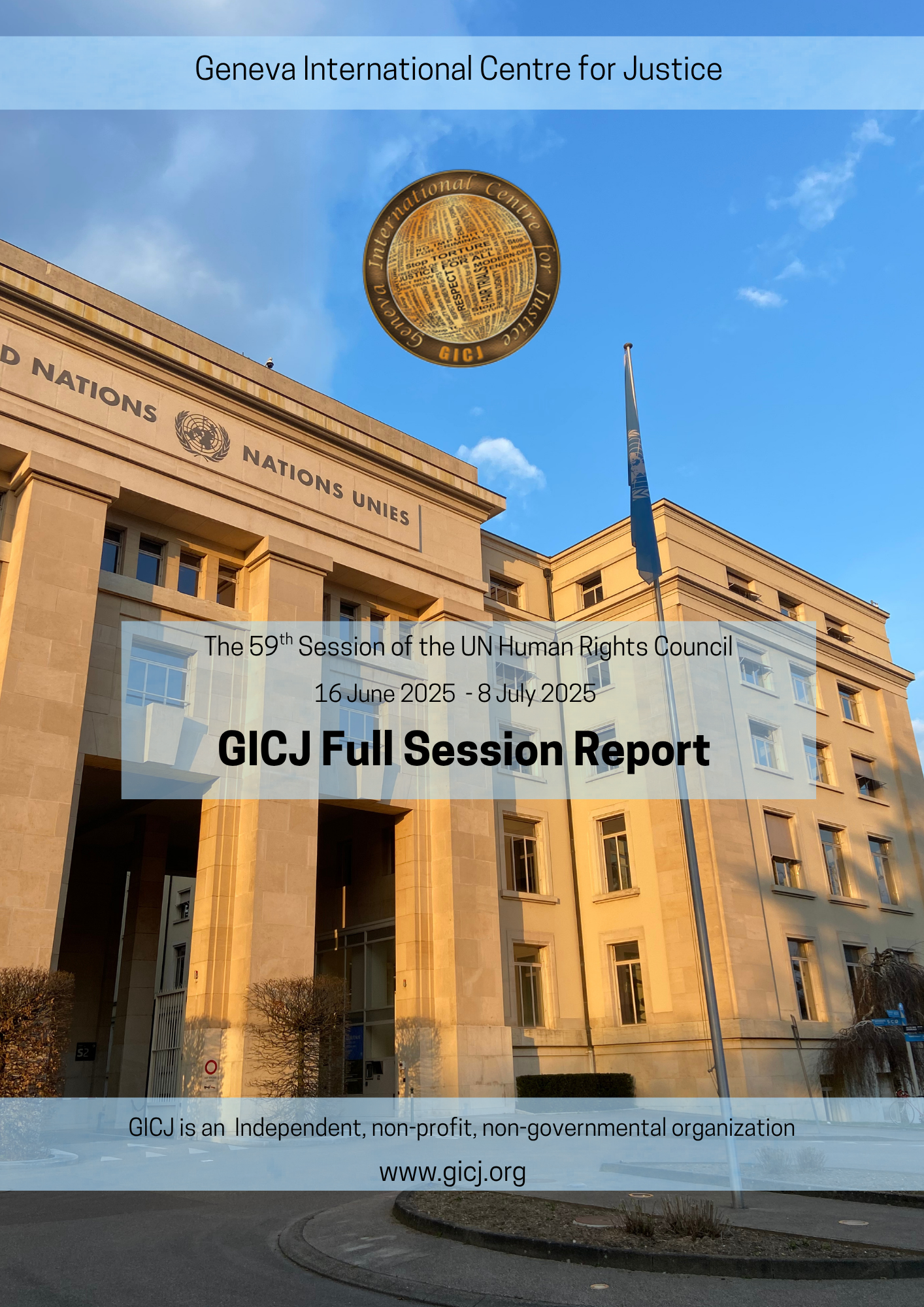31 May, 2021
Claudia González / GICJ
Worldwide, children are subject to grave violations of human rights and are particularly affected by extreme poverty, conflict, violence, malnutrition and numerous forms of abuse, such as forced labour and child marriage[i]. Enhancing their protection and ensuring their well-being, therefore, is essential in order to guarantee their right to a safe and peaceful childhood. In this context, the UN officially recognized November 20 as World Children’s Day, although countries like China hold International Children’s Day on June 1.
The 1989 UN Convention on the Rights of the Child is the most relevant international framework for the protection of children’s rights. It sets out the basic rights entitled to children regardless of the context in which they find themselves and is “the most widely ratified human rights treaty in the world”[ii]. In spite of this, children continue to be exposed to numerous threats, and further efforts need to be made at all levels in order to effectively protect them from serious abuses and to ensure their optimal development.
Children and Armed Conflict
Children are extremely vulnerable in conflict situations and disproportionately suffer the consequences of war. According to the 2020 Secretary-General Report on Children and Armed Conflict, throughout 2019, the UN verified at least 25,000 grave violations against children by state and non-state actors[iii]. These included the killing and maiming of children, the recruitment or use of children as soldiers, sexual violence, abductions, attacks against schools and hospitals and the denial of humanitarian access for children, which have been identified as 6 grave violations to which children in conflict settings are particularly vulnerable by UN Security Council Resolution 1261 (1999)[iv].
As noted in the report, all six violations continue to be very prevalent. In 2019 alone, more than 4,000 children were killed, more than 6,000 were maimed, more than 7,500 were recruited or used as soldiers and more than 1,500 were abducted “for recruitment and use and sexual violence or ransom”[v]. Additionally, children’s access to humanitarian aid was considerably hampered, and schools and hospitals continued to be targets of violence and destruction, with more than 900 incidents verified by the UN in States like Syria, Palestine, Afghanistan and Somalia[vi]. These crimes often go unpunished and perpetrators are hardly brought to justice[vii].
Sexual violence against children in situations of armed conflict is cause of great concern, as the risk they face today has increased almost ten-fold in the past 30 years[viii]. Since 2006, the UN has been able to verify more than 20,000 instances of sexual violence against children in conflict settings[ix]. Such crimes may include rape, sexual slavery, forced prostitution, sexual abuse, and sexual mutilation and torture[x]. However, these violations are widely underreported due to the absence of reporting systems, the stigma attached to survivors, the fear of potential retaliations and the lack of support provided to victims[xi]. The real scope of sexual-related crimes, therefore, is likely to be much greater than it is actually reported.
Children affected by armed conflict are also subject to a great deal of psychological violence[xii] and are likely to suffer long-term mental health consequences. This issue is particularly relevant, as it has generally been widely overlooked[xiii]. Children who have experienced trauma and have suffered grave crimes themselves must be given specialised psychological support and children’s mental health must be made a priority in order to ensure their well-being, recovery and optimal development[xiv].
The Covid-19 pandemic has made things even worse for children in conflict, as it has made them more vulnerable to grave crimes and has hampered the fulfilment of their rights[xv]. School closures, for instance, have exacerbated their risk to being recruited or used as soldiers[xvi]. Similarly, girls’ vulnerability to sexual violence has “been exacerbated by the suspension of services, reduced mobility and increased isolation”[xvii]. It is essential, therefore, that child protection services are further strengthened and children in armed conflict are provided adequate support in the face of such heightened vulnerability.
Displaced Children
Every year, millions of children flee their homes escaping violence, conflicts, natural disasters and poverty, or seeking out better opportunities for their futures[xviii]. According to UNICEF, in 2019, the number of migrant children amounted to almost 33 million[xix], and internal displacement reached an all time high with roughly 19 million children under the age of 18 displaced within the borders of their own countries[xx].
Migrant children are a particularly vulnerable population and are exposed to a wide range of safety risks and dangers, especially those who are unaccompanied or separated from their families. These children are often the target of violence, abuse, exploitation, neglect and discrimination[xxi]. Many are subject to child labour and marriage, human trafficking and smuggling[xxii], and in many cases, they lack access to basic services such as health care, adequate housing and sanitation[xxiii]. Additionally, displacement causes the interruption of many children’s education. It is estimated that “refugee children are 5 times more likely to be out of school than other children”[xxiv], which not only limits their right to education but also hampers their development.
Thousands of migrant children are also vulnerable to detention. According to a 2020 report of the Special Rapporteur on the human rights of migrants, “at least 330,000 children are detained for migration-related purposes every year”[xxv] in violation of international human rights law. As noted in the report, children in detention are held in “appalling physical and grossly inadequate conditions”[xxvi] and put in overcrowded facilities where access to essential services is very limited[xxvii]. Additionally, detained children are particularly vulnerable to serious human rights violations such as “torture and ill-treatment, trafficking and exploitation”[xxviii], and are at a high risk of being subject to violence[xxix].
The Covid-19 pandemic has further exacerbated the vulnerability of migrant children. The closure of borders has forced many of them to “stay in hazardous settings or to explore dangerous alternative routes”[xxx]. Additionally, some countries have continued returning migrant children during the pandemic. In the United States, for instance, between December 2019 and April 2020 more than 10,000 unaccompanied children were repatriated “without being tested for the virus or screened to ascertain whether they had credible fear of persecution”[xxxi]. Conditions in refugee camps and other similar settings have also worsened during the Covid-19 crisis, as it has caused significant shortages of essential supplies and personnel[xxxii]. Moreover, the pandemic has also led to a dramatic surge of xenophobia against migrant children, who before the pandemic already faced significant discrimination challenges[xxxiii].
Child marriage and Female Genital Mutilation
Every year, millions of young girls are forced into child marriage. According to UNFPA, an estimated 21% of girls in the world are married before the age of 18, and around 5% before the age of 15[xxxiv]. Altogether, around 650 million girls and women today are believed to have married as minors, and it is estimated that 12 million young girls are married every year[xxxv]. Figures are particularly concerning in developing countries, where 40% of girls marry before 18 and 12% before 15[xxxvi]. Such practice is very prevalent in sub-Saharan Africa, especially in Niger, the Central African Republic and Chad, where 76, 68 and 67% of girls are married before their 18th birthday respectively[xxxvii]. While child marriage has experienced a worldwide decrease in the past few years, therefore, the practice is still very prevalent, and the Covid-19 pandemic has further exacerbated the exposure of many girls to this human rights violation[xxxviii].
Child marriage is often the result of gender inequality, poverty, social standards and insecurity[xxxix] and it poses a significant threat to young girls, as it prevents them from enjoying a fulfilling childhood and/or adolescent life and puts their health and well-being at risk. Girls who are married as minors are far more likely to be subject to domestic violence and they do not usually continue their education[xl]. Moreover, following their early marriage, many girls become pregnant as adolescents, which increases the probability of experiencing complications[xli]. In fact, in developing countries pregnancy and childbirth-related complications “are the leading cause of death among adolescent girls aged 15 to 19”[xlii].
Another highly concerning practice to which young girls are exposed is female genital mutilation (FGM). An estimated 200,000 girls and women today have been subject to this practice that constitutes a clear violation of human rights[xliii]. FGM is mostly performed on young girls before they reach the age of 15[xliv] and about 4 million girls are each year at risk of being cut[xlv]. Such practice is particularly prevalent in some African, Middle Eastern and Asian countries[xlvi], and in places like Somalia, Guinea and Djibouti, it is still a generalised practice[xlvii]. FGM can have dramatic short and long-term consequences for the health of girls. Some may include “severe pain, prolonged bleeding, infection, infertility and even death”[xlviii]. FGM can also lead to serious childbirth complications and may cause psychological damage to girls and women[xlix].
Some advances have been made in the reduction of FGM over the last 30 years[l]. However, such practice is still very prevalent in various parts of the world and, as in the case of child marriage, much work is yet to be done. As specified in Goal 5 of the Sustainable Development Goals, the aim is to “eliminate all harmful practices, such as child, early and forced marriage and female genital mutilation”[li] by 2030. However, if this is to be achieved, efforts must be stepped up. In fact, in order to eliminate FGM by 2030, progress on its reduction would have to be “at least 10 times faster”[lii] than it is now.
Child Labour
Around the word, an estimated 152 million minors are subject to child labour[liii], which threatens their safety, well-being and development. Child labour may include exploitation, slavery, forced work, child prostitution, the engagement of children in drug trafficking activities and other unlawful acts, or any form of hazardous labour[liv], which refers to work that “is likely to harm the health, safety or morals of children”[lv]. Nearly half of minors who are engaged in some form of child labour, around 73 million, are performing hazardous work from ages as young as 5[lvi]. Such type of labour involves children working in dangerous, unsafe and poor conditions, and could lead to serious consequences such as injuries, psychological damage or even death[lvii]. This is particularly concerning, as according to ILO, around 22,000 children die every year at work[lviii]. Hazardous child labour may include activities that expose children to abuse, that involve using dangerous machinery and substances, or force children to work for long periods of time or at night[lix]. Children are particularly vulnerable to workplace-related dangers and the effects of hazardous work are generally “more devastating and lasting for them”[lx] than they are for adults.
Child labour may not only cause serious mental and physical harm to children, but has also a dramatic effect on their education. Most minors who are engaged in some form of child labour remain out of school, which denies them the right to education and interferes with their optimal development. Additionally, as noted by ILO, child labour “deprives children of their childhood, their potential and their dignity”[lxi].
Goal 8 of the 2030 Agenda for Sustainable Development sets an important objective for the elimination for child labour. Among other things, it aims to “take immediate and effective measures to […] secure the prohibition and elimination of the worst forms of child labour, and by 2025 end child labour in all its forms”[lxii]. Comprehensive and fast action must be taken if this goal is to be achieved, as it is expected that by 2025, around 121 million children will still be subject to some form of child labour, and 52 million will be engaged in hazardous work[lxiii].
| Source: ILO |
GICJ Position
Geneva International Centre for Justice (GICJ) remains highly concerned about the numerous threats to which children are exposed around the world and call on all relevant stakeholders at the international, national and local levels to increase their efforts to protect them from grave abuses. Most human rights violations against children are preventable. For that reason, we urge all countries to take immediate action to stop all crimes and violence inflicted upon them and to strengthen child protection services. It is also of utmost importance that perpetrators of crimes against children are held accountable. In this regard, we stress the importance of having solid reporting systems for crimes against children, which is an essential step towards justice and accountability. June 1 is an opportunity for those countries that hold international children’s day to reflect on the importance of protecting their young citizens. No child should ever have to endure any form of abuse and States have a responsibility to ensure their well-being and optimal development.
.
.
-----------------------------------------------------------------------
[i] UNICEF, (no date), “What is the Convention on the Rights of the Child?”, [Online] Available from: https://www.unicef.org/child-rights-convention/what-is-the-convention
[ii] Ibid.
[iii] United Nations, General Assembly, Children and Armed Conflict: report of the Secretary-General, A/74/845-S/2020/525 (9 June 2020), [Online] Available from: https://www.securitycouncilreport.org/atf/cf/%7B65BFCF9B-6D27-4E9C-8CD3-CF6E4FF96FF9%7D/S_2020_525_E.pdf
[iv] United Nations, (no date), “The Six Grave Violations”, Office of the Special Representative of the Secretary-General for Children and Armed Conflict, [Online] Available from: https://childrenandarmedconflict.un.org/six-grave-violations/
[v] United Nations, General Assembly, Children and Armed Conflict: report of the Secretary-General, A/74/845-S/2020/525 (9 June 2020), [Online] Available from: https://www.securitycouncilreport.org/atf/cf/%7B65BFCF9B-6D27-4E9C-8CD3-CF6E4FF96FF9%7D/S_2020_525_E.pdf
[vi] Ibid.
[vii] UNICEF USA, (no date), “Children in War and Conflict”, [Online] Available from: https://www.unicefusa.org/mission/emergencies/conflict
[viii] Save the Children, (2021), “1 in 6 Children Living in Conflict Zones at Risk of Sexual Violence by Armed Groups”, [Online] Available from: https://www.savethechildren.net/news/1-6-children-living-conflict-zones-risk-sexual-violence-armed-groups
[ix] Ibid.
[x] Ibid.
[xi] Ibid.
[xii] ICRC, (2019), “Children Forced to Go to War”, [Online] Available from: https://www.icrc.org/en/document/children-forced-go-war
[xiii] UNICEF, (2018), “Mental Health Needs of Children and Young People in Conflict Need to Be Prioritized, Conference Says”, [Online] Available from: https://www.unicef.org/press-releases/mental-health-needs-children-and-young-people-conflict-need-be-prioritized
[xiv] Ibid.
[xv] ReliefWeb, (2021), “Conflict-Affected Children at Heightened Risk of Grave Violations Due to Covid-19, as 2020 Marked OPAC’s 20th Anniversary”, from OSRSG Children and Armed Conflict, [Online] Available from: https://reliefweb.int/report/world/conflict-affected-children-heightened-risk-grave-violations-due-covid-19-2020-marked
[xvi] United Nations, (2021), “New Study on Impact of Covid-19 Pandemic on Children Affected by Armed Conflict Shows Importance of Supporting United Nations and Partners on the Ground”, OSRSG Children and Armed Conflict, [Online] Available from: https://childrenandarmedconflict.un.org/2021/05/new-study-on-impact-of-covid-19-pandemic-on-children-affected-by-conflict-shows-importance-of-supporting-united-nations-and-partners-on-the-ground/
[xvii] Ibid.
[xviii] UNICEF, (no date), “Migrant and Displaced Children”, [Online] Available from: https://www.unicef.org/migrant-refugee-internally-displaced-children
[xix] UNICEF, (2021), “Child Displacement”, UNICEF Data, [Online] Available from: https://data.unicef.org/topic/child-migration-and-displacement/displacement/
[xx] UNICEF, (2020), “19 Million Children Internally Displaced by Conflict and Violence in 2019, Highest Number Ever”, [Online] Available from: https://www.unicef.org/rosa/press-releases/19-million-children-internally-displaced-conflict-and-violence-2019-highest-number
[xxi] UNHCR, (no date), “Children”, [Online] Available from: https://www.unhcr.org/children-49c3646c1e8.html
[xxii] UNICEF, (no date), “Migrant and Displaced Children”, [Online] Available from: https://www.unicef.org/migrant-refugee-internally-displaced-children
[xxiii] UNICEF, (2020), “Lost at Home”, [Online] Available from: https://data.unicef.org/resources/lost-at-home-risks-faced-by-internally-displaced-children/
[xxiv] UNICEF, (no date), “Migrant and Displaced Children”, [Online] Available from: https://www.unicef.org/migrant-refugee-internally-displaced-children
[xxv] United Nations General Assembly, (2020), “Ending Immigration Detention of Children and Providing Adequate Care and Reception for Them”, Report of the Special Rapporteur on the Human Rights of Migrants, Felipe González Morales, [Online] Available from: https://undocs.org/Home/Mobile?FinalSymbol=A%2F75%2F183&Language=E&DeviceType=Desktop
[xxvi] Ibid.
[xxvii] Ibid.
[xxviii] Ibid.
[xxix] Ibid.
[xxx] Bhabha, J. (2020), “Time for a Reset: Implications for Child Migration Policies Arising from Covid-19, International Organization for Migration (OIM), Geneva. [Online] Available from: https://publications.iom.int/system/files/pdf/implications-for-child.pdf
[xxxi] Ibid.
[xxxii] Ibid.
[xxxiii] UNICEF, (no date), “Migrant and Displaced Children”, [Online] Available from: https://www.unicef.org/migrant-refugee-internally-displaced-children
[xxxiv] UNFPA, (2020), “Child Marriage”, [Online] Available from: https://www.unfpa.org/child-marriage
[xxxv] UNICEF, (2020), “Child Marriage around the World”, [Online] Available from: https://www.unicef.org/stories/child-marriage-around-world
[xxxvi] UNFPA, (2020), “Child Marriage”, [Online] Available from: https://www.unfpa.org/child-marriage
[xxxvii] UNICEF, (2020), “Child Marriage around the World”, [Online] Available from: https://www.unicef.org/stories/child-marriage-around-world
[xxxviii]UNICEF, (2021), “Covid-19: A Threat to Progress Against Child Marriage”, [Online] Available from: https://data.unicef.org/resources/covid-19-a-threat-to-progress-against-child-marriage/
[xxxix] Girls Not Brides, (no date), “About Child Marriage”, [Online] Available from: https://www.girlsnotbrides.org/about-child-marriage/
[xl] UNICEF, (no date), “Child Marriage”, [Online] Available from: https://www.unicef.org/protection/child-marriage
[xli] Ibid.
[xlii] UNFPA, (2020), “Child Marriage”, [Online] Available from: https://www.unfpa.org/child-marriage
[xliii] WHO, (2020), “Female Genital Mutilation”, [Online] Available from: https://www.who.int/news-room/fact-sheets/detail/female-genital-mutilation
[xliv] Ibid.
[xlv] UNICEF, (2019), “What is Female Genital Mutilation? 7 Questions Answered”, [Online] Available from: https://www.unicef.org/stories/what-you-need-know-about-female-genital-mutilation
[xlvi] WHO, (2020), “Female Genital Mutilation”, [Online] Available from: https://www.who.int/news-room/fact-sheets/detail/female-genital-mutilation
[xlvii] UNICEF, (2020), “Female Genital Mutilation”, [Online] Available from: https://data.unicef.org/topic/child-protection/female-genital-mutilation/
[xlviii] UNICEF, (2019), “What is Female Genital Mutilation? 7 Questions Answered”, [Online] Available from: https://www.unicef.org/stories/what-you-need-know-about-female-genital-mutilation
[xlix] WHO, (2020), “Female Genital Mutilation”, [Online] Available from: https://www.who.int/news-room/fact-sheets/detail/female-genital-mutilation
[l] UNICEF, (2020), “Female Genital Mutilation”, [Online] Available from: https://data.unicef.org/topic/child-protection/female-genital-mutilation/
[li] United Nations, (no date), “Goal 5: Achieve Gender Equality and Empower all Women and Girls”, Sustainable Development Goals, [Online] Available from: https://www.un.org/sustainabledevelopment/gender-equality/
[lii] UNICEF, (2019), “What is Female Genital Mutilation? 7 Questions Answered”, [Online] Available from: https://www.unicef.org/stories/what-you-need-know-about-female-genital-mutilation
[liii] UNICEF, (no date), “Child Labour”, [Online] Available from: https://www.unicef.org/protection/child-labour
[liv] ILO, (no date), “What is Child Labour”, [Online] Available from: https://www.ilo.org/ipec/facts/lang--en/index.htm
[lv] Ibid.
[lvi] ILO, (no date), “Hazardous Child Labour”, [Online] Available from: https://www.ilo.org/ipec/facts/WorstFormsofChildLabour/Hazardouschildlabour/lang--en/index.htm
[lvii] Ibid.
[lviii] Ibid.
[lix] ILO, (no date), “What is Child Labour”, [Online] Available from: https://www.ilo.org/ipec/facts/lang--en/index.htm
[lx] Ibid.
[lxi] Ibid.
[lxii] United Nations, (no date), “Goal 8: Promote inclusive and sustainable economic growth, employment and decent work for all”, Sustainable Development Goals, [Online] Available from: https://www.un.org/sustainabledevelopment/economic-growth/
[lxiii] UNICEF, (no date), “Child Labour”, [Online] Available from: https://www.unicef.org/protection/child-labour




